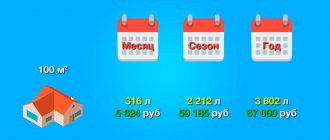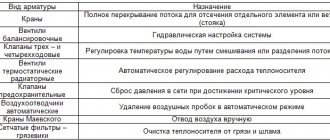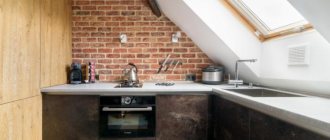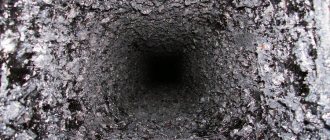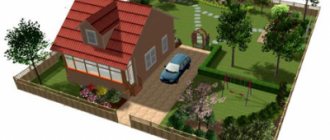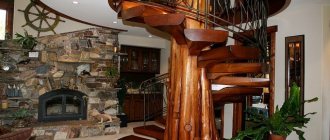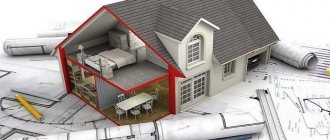From this article you will learn:
- What are the advantages and disadvantages of a stone stove?
- Where is the best place to install a stove in the house?
- Stove heating in the house: problems and features;
- What kind of brick should the structure be made of?
- What are the requirements for the foundation for a stone stove?
- Can it become an alternative to a solid fuel boiler?
- What you need to know about fire safety standards for stove heating in a private home.
Choosing a heating system depending on the size of the house
- For small, well-insulated houses, consisting of one or two rooms and a kitchen, one heating and cooking stove made of brick will be sufficient.
- For larger buildings, it is necessary to carefully consider the heating system so that the entire house can be heated from one stove. For this purpose, heating is used using a water or steam circuit.
- For a one-story building, such a circuit can be connected to a brick stove or one made of cast iron. When installing a system in a two- or three-story house, a cast-iron stove-boiler is more suitable.
The next thing you need to decide is the type of fuel. The system can be heated with wood, coal, peat, gas, diesel, electricity or several of them. This choice will determine which heating stove to purchase.
How to properly make stove heating so that it functions with maximum heat transfer?
An ordinary brick oven requires a firebox, an ash pan, and a smoke exhaust system. It is thanks to the last element that the room is heated, since gases pass through complex channels and give off their heat to the brick.
However, if the area of your home is too large, then this heating system will not be very effective. Therefore, today heat exchangers are often installed inside the furnace, which heat water, air or generate steam. Thanks to such a system, the efficiency of the heating structure increases significantly, which helps to increase the heating area in the building with the same amount of fuel used.
Brick oven
So, as mentioned above, for a small building it is enough to build one stove, which will be heated with wood or coal.
The stove model must be chosen in such a way that it can not only heat the premises, but also be an assistant in cooking.
To ensure that this heating structure does not cause any inconvenience and is as efficient as possible, you need to choose a suitable location for it. A well-placed stove can easily warm two rooms and a kitchen.
Such a stove will successfully heat several adjacent rooms.
For example, this model shown in the figure would be a good option for heating three rooms. You need to know that the heat transfer from the stove depends on the surface area of the building, i.e. if one side of the stove opens into the room, it will be fully heated. In addition, the massive structure takes much longer to cool down. By heating the building in the evening, you can be sure that it will transfer heat into the room until the morning.
The stove must be laid during the construction of a house, but its foundation must be separated from the general foundation of the building. It is possible to install a brick stove in an already built house, but this will be more difficult, since you will have to raise part of the floor and make a hole in the ceiling and roof to install a chimney.
General diagram of a home stove heating system
This diagram clearly shows the structure of the building, the structure of the foundation, the chimney channels and the passage of the pipe through the floors with all the necessary parameters that must be adhered to.
What you will need for work
This is what you will need to spend money on and prepare for the work to begin. It is best to find/order/buy pipes; they may not be new, but it is better if they are made of galvanized metal. We need batteries - they also may not be new, for example, the author got them after a major overhaul from mechanics who assembled them and did pressure testing. You need a suitable boiler, an electrical connection (carrying out wires), a thread cutting machine, a 100 die and a pipe holder, couplings and angles in large quantities, the most expensive thing was a pump, you need a programmable relay, a 1.5 W heater and another ring for ten, that is, it is an adapter for welding a nut. It’s worth buying an expansion tank right away, 3 pieces of Mayevsky valve to remove air from the system, a pressure relief valve with a pressure gauge. From the tools you will need to prepare two gas wrenches, a drill, feathers instead of a drill for an inch pipe.
The entire assembly took two weeks, but after that the author realized that he had made some mistakes, he had to re-arrange the pipes, twist the threads, and trim. The system operates using a battery-charged timer. And for heating there is a separate socket and RCD. External house wiring with 2.5 wire. This is enough for safety. There are no mice in the house, but just in case, the wiring between the walls is equipped with tubes.
What size house can be heated with a brick stove with a water circuit?
A brick stove can also be adapted for heating large areas if, when building it, a heat exchange element is placed near the firebox through which the coolant will pass, heating up and then circulating in the heating system distributed throughout the house. In this case, you may need to connect a water pump, which will accelerate the movement of coolant in the system.
Homemade efficient heat exchanger
Heat exchange elements can be of different shapes; the photo shows one of them. It is embedded in the structure of the stove near the combustion chamber so that, passing through it, the water quickly heats up and enters the pipes and radiators.
The inlet and outlet pipes from the heat exchanger are led outside the furnace structure, and the heating circuit is connected to them. Next, the system is filled with water, which will act as a coolant.
Wiring can be done using metal-plastic or polypropylene pipes
In this case, metal-plastic pipes are used for wiring and connection to the circuit.
Diagram of a wood stove with a water heating circuit
In this diagram, the heat exchanger is located above the firebox and is shown as a red grate. The blue line marks the cooled coolant, which passes through the circulation pump and enters the heat exchanger - this part of the circuit is called return. The red line marks the heated water entering the radiators.
A membrane tank is also installed in the heating circuit, which can be located in any accessible location in the circuit, but it is advisable to install it on the return pipe.
Diaphragm tank
It is also called a closed expansion tank. There is a nipple on its upper part, through which air is pumped into the upper chamber. When water in the system heats up, it expands and excess water rises into the tank, stretching the membrane. When cooling and the corresponding pressure drop, water is pressed back into the system. In this way, possible pressure surges in the pipes are smoothed out, and the risk of destruction of the integrity of the system from overheating is minimized.
Video sketch: an interesting version of a fireplace stove with a heating circuit
Prerequisites for installation
The water level in the design of the heat exchange element must be above 4 cm, otherwise it will boil, and this is unacceptable.
The water level in the heat exchange element structure must be higher than 4 cm
The coil must be at least 5 mm thick. If you use coal for combustion, the walls must be even thicker, otherwise they will simply burn out.
When installing, maintain a distance from the walls of the firebox. Leave at least 2 cm, this distance will be sufficient, taking into account the expansion of the coil when heated.
Be especially careful about the fire hazard of the entire structure. Inside the stove there must be distances between the wooden partitions and the walls, since simple contact of these parts threatens a fire. It is optimal to make the finishing from brick or other fire-resistant material.
Related article:
Comfort, warmth and beauty in a country house: 5 types of fireplaces for a summer house
Cast iron stove
Cast iron stoves, although small in size, are capable of heating a fairly large room with a volume of up to 80-90 cubic meters. meters. This option will be ideal for a country house, since the device has a hob function. Thanks to their elegant design, today they are also happily installed in expensive mansions, as they are an interior decoration.
Cast iron heating stove
The best option of all cast iron models is a long-burning stove. It is capable of transferring heat into the room for a long time, despite the fact that firewood is placed in it once during the entire heating period. This effect is achieved due to the internal design of the furnace, which allows the active flame to be reduced to slow smoldering.
A long-burning boiler-stove can also have a water circuit.
Cast iron stoves with water circuit
Cast iron stoves with a water circuit are produced in different capacities and are designed for heating different areas. Some of them are capable of heating a two- and three-story house. The heating circuit is constructed using the same system as for brick stoves.
Long-burning cast iron stove with heating circuit
Furnaces are produced from cast iron and combined type, i.e. having electric heating, which turns on automatically when the temperature of the smoldering firewood decreases. This combination of oven functions will always help maintain the heating system at the desired temperature.
One of the possible heating schemes for a two-story private house
Cast iron boiler-stoves can also be designed for a double-circuit heating system, i.e. In addition to the warmth in the house, the owners will also have heated water.
What should you consider when choosing and installing a stove?
When choosing which heating stove will be installed in the house, you need to correctly formulate the requirements for it, and, based on them, purchase or build a heating device.
- The heating properties of the entire brick kiln structure are very important. Therefore, if you decide to install such a stove, you need to choose the right project and ensure the ideal construction of the building.
- The efficiency of the heating system will also depend on the design and layout of the water circuit, as well as the choice of radiators for the heating system. There are stove designs that can operate in summer and winter mode - this factor also contributes to the economical operation of the device.
- Part of the savings can be attributed to the long cooling of the furnace, which will allow you to use less fuel.
- An important point is ease of operation and maintenance.
- The structure must comply with all fire safety rules for its location and installation.
- A properly executed design will have the required draft, which will protect the house from carbon monoxide entering the premises.
- The stove must be designed for a long period of operation.
- Of course, it would be nice for the stove to become a real decoration of the home, and not just be functional from a practical point of view.
Firewood must be brought as soon as you decide to lay out the stove.
Yes, firewood is needed earlier. “What nonsense?” you say. It's all about the quality of the firewood. Nobody will sell you dry firewood, and it doesn’t dry in logs, it can only dry if it is chopped, and dry logs are much more difficult to cut. And no one has them - they don’t lie in logs, they don’t lie chopped - they all go away at once.
The paradox is that it is even better to heat a stove with wet wood than with wet wood... this is true, but it is a joke. The joke is that many people don’t know: wet and wet are different firewood.
Now seriously. It is better to heat stoves with birch, we are not considering another option, perhaps in another article we will explain why.
Wet, freshly cut firewood provides a lot of moisture and interferes with the drying of the newly built stove. They prolong the drying period, reduce the efficiency of the stove, the combustion temperature of the wood decreases, if it burns at all and does not smolder... They produce little heat, but are quite harmful to the stove.
And when you have a new stove, damp after laying and washing (joining), you need to carefully and delicately dry it... with dry firewood.
It must be said that truly dry firewood should lie “in the wind,” but under a canopy (awning, slate, etc.) for a couple of years or at least a season. That is why a house with a stove must have firewood stored for three seasons and replenished every year - so that it has time to dry for two years.
It happens that the decision to lay masonry arises spontaneously, when the house is already ready. There is no time to dry the firewood. You still need to order firewood as early as possible. They have to be laid out near the heating appliances in the house in order to somehow dry them. For example, we offer our clients a service - dry firewood for the safe commissioning of the stove (for drying).
Positive and negative aspects of stove heating in a private house
In most cases, stove heating is installed if necessary, in the absence of main natural gas. But heating with a stove has its advantages and disadvantages, which it would also be nice to know about.
What are the disadvantages?
Negative points include:
- It takes quite a long time to heat up the stove, and therefore the premises. This occurs due to prolonged heating of the walls and coolant in the system.
- Not very high efficiency of a brick building. To increase it, you have to build a higher chimney, make it a labyrinth type, so that the heat remains inside the structure longer.
- A brick stove occupies a fairly large area, but only on such a scale is it capable of heating several rooms at the same time.
- Unlike heating with natural gas, the stove must be supervised throughout its entire combustion, since brick options require constant addition of fuel. Long-burning cast iron stoves are an exception, since firewood is added once per burning session.
Positive points
Stove heating also has many positive qualities, which are often decisive in choosing it for installation in a private home.
- Autonomy, which means reliability. The house will always be heated, even if the electricity and water are turned off.
- Affordability of construction and operation of the structure.
- Cost-effectiveness in purchasing fuel and no bills for the main gas or hot water supply, which, unfortunately,
- Easy to operate - the oven does not require programming, and if problems arise, they can be eliminated independently, without the involvement of specialists.
- Since the stove does not require communications for its operation, it can be installed or erected in a house located in any region and locality.
Water heating from a stove: ensuring an optimal temperature microclimate
Wooden houses in the classic version with stove heating warm up very unevenly. Heated air is constantly near the stove, and distant corners are cool. Using multiple ovens is quite expensive. It is better to combine heating - stove and water, as many of our compatriots do, who strive to achieve the warmth and comfort of their existence.
The solution is to equip a conventional brick oven with a heat exchanger shaped like a coil. It is installed in fuel rooms or at the base of chimneys. The heat from the stove warms up the water in it, which then goes to the radiators located in the rooms. Buildings are heated evenly.
The advantages of such systems include:
- Efficient and uniform heating - batteries are installed in different rooms and provide constant heat.
Complete independence - such heating systems are not affected by gas or gas pipelines. The only dependence is on the owner, who determines when and how much to heat.
- There is no need to attract specialists to service heating systems. It is quite within the capabilities of consumers themselves.
The disadvantage of such heating using stoves is its rather high fire hazard, which requires compliance with building protection measures. This option cannot be considered mobile, since movement is excluded. Not used in two-story houses. It is necessary to resort to the construction of an additional furnace, which entails considerable costs.
Despite the need to start heating daily from a water-heated stove, significant fuel savings are felt. Another disadvantage is the need for constant monitoring of the functioning of the system.
